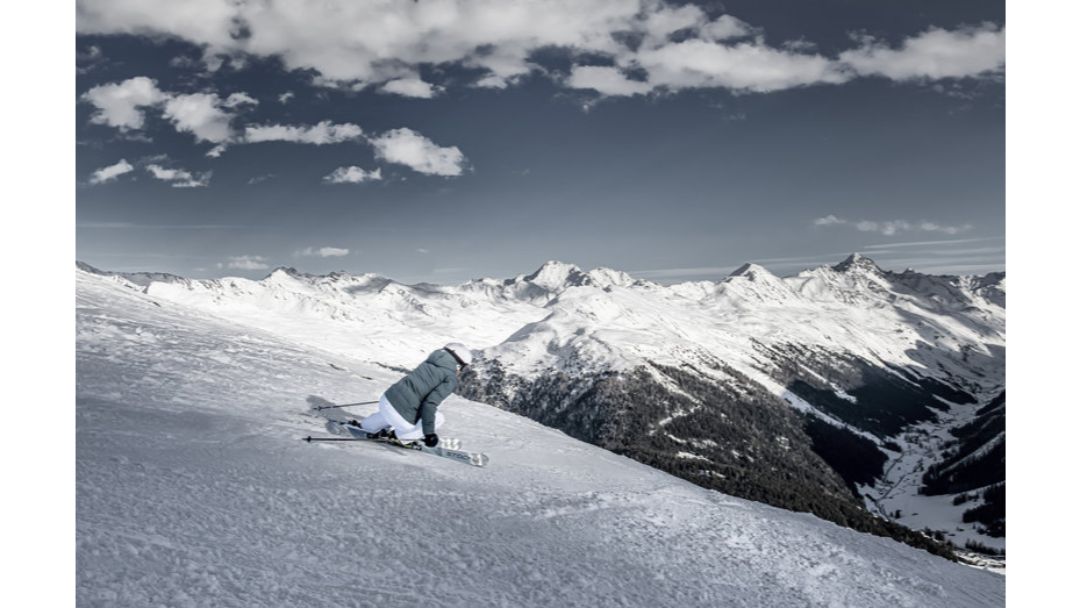Overview
Our spider sense tingles when we hear the term “handmade” applied to skis, as the implication is that such slats will receive extraordinary care in manufacture no mass-produced ski can hope to receive. One reason we look sideways at the “handmade” qualifier is that all adult skis are to some degree handmade and some processes – even at “handmade” plants – are best managed robotically. In fact, there’s no obligatory reason a “handmade” ski should be superior, or conversely, a “mass produced” model shouldn’t be exquisite. While the “handmade” handle hopes to convey scrupulous craftsmanship, it’s just as likely to be a euphemism for “inefficient production technology with slack quality control.”
Of all the brands that hang their hat on a handmade reputation, Stöckli represents the best of what we associate with the term and avoids all the potential pitfalls. Perhaps all we need to say is that it is Swiss to the core. If it is inefficient, it’s because it chooses to be; who else tinkers with its production several times mid-season as new ideas are tested and adopted? Sure, other brands are also refining their products throughout the year, but they don’t usually make such midstream improvements available to the public. But if Stöckli concocts a faster race ski, the next model it makes – whether for a racer or a consumer – will incorporate those improvements. If that sounds special, it is.
Stöckli doesn’t condescend to their buying public. It assumes if you want its race skis, you want the same race skis its World Cup athletes use, so that’s what you get. It doesn’t compromise on construction and the finishing steps applied to all Stöckli skis are state-of-the-art and beyond meticulous. Most companies would fire any engineer who recommended a method that took a week to produce a finished ski; at Stöckli, they’d probably promote him.
Stöckli’s willingness to try new technology is evident in the recent history of its top Laser and Stormrider models, its two most popular series in the U.S. A few years ago, it inserted polyamide strips in the top Titanal layer of four Stormrider models, only to remove them a year later because the inserts were hard to manage from a quality control standpoint. Apparently undaunted by manufacturing challenges, it co-created Turtle Shell Technology, which consists of S-shaped slits in Titanal laminates that are filled with an elastomer so they can be squeezed together under pressure. Turtle Shell tech comes in two versions, Turtle Shell Racing, with a deep notch in the thick base laminate for competition skis, and Turtle Shell Comfort, with a smaller gap in the top sheet for recreational models like the Laser AX and Laser MX for women.
While it fair to say that Stöckli marches to the beat of its own drum, it’s not completely immune to market trends. It’s made an effort to lighten its Stormrider series over the years, and, perhaps grudgingly, has incorporated a touch of tip and tail rocker to its all-world off-trail models.
With the addition two years ago of the Laser AR, Stöckli bridged the gap between its Laser and Stormrider collections, moving its widest carver within 5mm (waist width) of its narrowest all-mountain model. At 83mm underfoot, the Laser AR is one of a cluster of new models that blur the distinction between on-trail and all-terrain models. In theory, an all-terrain ski would have more accommodations for powder-like conditions, but in practice a great many skiers with all-mountain skills spend upwards of 70% of their time on groomers. For them, a great carver like the Laser AR that won’t wilt in the face of a little loose snow is a more sensible option than a double-rockered fatty.
One reason Stöcklis aren’t more widely distributed in America is their elevated, and rarely discounted, prices, usually over $1,000 in a market stuffed with quality options at $699. If you can manage to swallow that hairball, you’ll discover why Stöcklis are the sort of skis you own for life.
The 2022 Season
Stöckli has earned a loyal following among expert off-piste skiers with its Stormrider series, but they’ve also earned a reputation for being on the burly side, one they’ve tried to mitigate with a series of weight-saving gestures, such as eliminating topsheets and tapering the thickness of its Titanal laminates. For 2021/22, Stöckli quelled the aggressive nature of the 20/21 Stormrider 105 by trimming its shape down to a 102mm waist and adding more rocker to its baseline, moves that should lower the ability floor, allowing a so-so skier to handle them.
In our testers’ limited experience, these changes also lowered the Stormrider 102’s ceiling, which might rankle O.G. Stöckli supporters. Stöckli may well be right in proposing a softer, gentler Stormrider, but it may not be as appealing as its ancestry to experts accustomed to older Stöcklis’ take-no-prisoners style.

